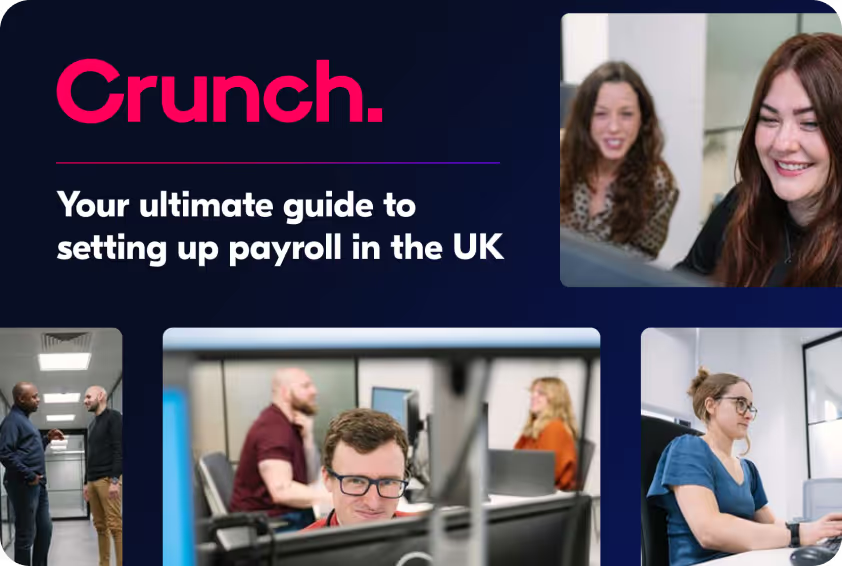Student loan repayments are a tough reality of university life. While it can be a significant burden anyway, it can be even more intimidating for those who are self-employed. As a freelancer, contractor, or small business owner, your student loan repayments will need to be included on your annual Self Assessment tax return.
Confused about how to go about managing your repayments? Don’t sweat, here’s everything you need to know about paying back a student loan when you’re self-employed.
{{cta-self-assessment}}
How much do I need to be earning before repayment starts?
It depends on when and in which part of the United Kingdom your student loan was taken out.
There are currently 4 types of student loan in operation:
- Student Loan Plan 1 introduced from 6th April 2000
- Student Loan Plan 2 introduced from 6th April 2016
- Student Loan Plan 4 introduced from 6th April 2021
- Postgraduate Loan introduced from 6th April 2019
If you took out your student loan in England or Wales before 1st September 2012, you will repay your loan under HMRC’s Plan 1. Loans taken out after 1st September 2012 are Plan 2 Loans.
Northern Ireland loans are all Plan 1.
Loans taken out in Scotland up to 5th April 2021 are Plan 1 Loans. However, from 6th April 2021, all existing Plan 1 Loans and any new loans are being moved to the new Plan 4 Loan rules.
For Plan 1 Loans, regardless of the part of the UK the loan relates to, you’ll start repaying your student loan the April after you leave your course.
New Plan 4 Loans from 6th April 2021 in Scotland
There’s a new type of Student Loan being introduced in Scotland from 6th April 2021. The Plan 4 loan is for new or existing Scottish students who applied for loans from the Student Awards Agency Scotland (SAAS) during their studies. All students who have a Scottish Student Loan Plan 1 Loan will be moved onto the new Plan 4 Loan which has a higher threshold before repayments need to start.
How much do I need to be earning before repayment starts?
The following tables show the thresholds to start repaying your student loans. For earlier years, please check HMRC’s website.
How and when do I repay my student loan?
Repayments are made at the rate of 9% automatically through the tax system and stop once you’ve paid off your student loan in full. This applies whether you’re self-employed or in direct employment.
Full-time courses – you’ll start repaying in the month of April after you finish or leave your course, but only if you’re earning over the repayment threshold. For example, if you graduate in June 2020, you’ll start repaying in April 2021, if you’re earning enough.
Part-time courses – you’ll be due to start repaying the April four years after the start of your course, or the month of April after you finish or leave your course, whichever comes first, but only if you’re earning over the repayment threshold.
Students who took out Student Loans in Northern Ireland are only affected by Plan 1.
As mentioned above, Scottish Student Loans are all moving to a new Plan 4.
What about a Postgraduate Master’s Loan or Postgraduate Doctoral Loan?
You’re on a Postgraduate Loan repayment plan if you’re an English or Welsh student who took out a Postgraduate Master’s Loan or Postgraduate Doctoral Loan.
If you took out a Master’s loan or a Doctoral loan, the earliest you start repaying is when your income is over £403.84 a week or £1,750 a month (before tax and other deductions). This is a salary of £21,000 per annum and it’s payable from the first April after you leave your course (or 4 years after the course started if you’re studying part-time). Deductions will be at a rate of 6%.
If you’re a Scottish or Northern Irish student who took out a Postgraduate Tuition Fee Loan or Postgraduate Living Cost Loan (Scotland only), you’ll start to repay these once your earnings are at £18,330 per year. Deductions will be at a rate of 9%.
How does this affect me as a self-employed person?
If you complete and return your 2025/26 Self Assessment form to HMRC by 31st October 2025, HMRC will calculate how much you need to pay for student loan repayments, as well as the usual tax and National Insurance contributions. You can get your accountant to perform these calculations for you if you prefer (see below) and include these on your Self Assessment return for submission to HMRC by the deadline of 31st January 2027.
Your tax liability must be paid to HMRC by 31st January following the end of the tax year. HMRC will pass the details of your student loan repayment amount to the Student Loan Company, who will update your loan account accordingly.
What if I didn’t get my Self Assessment in before 31st October?
If you don’t submit your Self Assessment to HMRC by the 31st October, you (or your accountant) will need to calculate the repayment amount and include it on your Self Assessment return. Every student loan holder is required to pay back 9% of their annual gross income that falls above the threshold.
To work out how much you need to pay, you need to:
- Calculate your annual gross income by adding together your gross salary, gross dividends, and any other earnings
- Subtract the threshold that applies to you: either £24,990 (Plan 1) or £27,295 (Plan 2) or £31,395 (Plan 4) from your annual gross income to find out how much over the threshold you are
- Calculate your student loan repayment for the year which will be 9% of the remaining amount.
The balance is your annual payment. You must submit your annual Self Assessment and the payment for all outstanding tax liabilities, including your student loan, by the HMRC deadline of 31st January to avoid any fines or penalties.
{{tax-guide}}
Some worked examples of repayments for previous years
Example 1 - Loan taken out in Scotland
Joe took his loan out in Scotland, so he was originally affected by Plan 1, but as he has a Scottish Loan he will now be moving to Plan 4. In the 2024/25 tax year, he will have a gross salary of £16,000, with dividends of £18,000 and other earnings of £2,000. To find his annual loan repayment amount, he would:
- Add these amounts together, (making £36,000)
- Subtract the Plan 4 threshold of £31,395 for the 2024/25 tax year (leaving £4,605)
- Calculate 9% of £4,605, giving him an annual loan repayment of £414.45.
Example 2 - Loan taken out in England
Sarah took her loan out after 1st September 2012 in England, so she is affected by Plan 2. She had a gross salary of £16,000, with dividends of £12,000 and other earnings of £2,000. To find her annual loan repayment amount, she would:
- Add these amounts together, (making £30,000)
- Subtract the Plan 2 threshold of £27,295 (leaving £2,705)
- Calculate 9% of £2,705.00, giving her the annual loan repayment amount of £243.45.
Example 3 - Loan taken out in Wales
Stephen took out his loan before 1st September 2012 in Wales so he is affected by Plan 1. In the 2023/24 tax year, he had a gross salary of £8,788, dividends of £22,212 and no other income. To find his annual loan repayment amount, he would:
- Add these amounts together, (making £31,000)
- Subtract the Plan 1 threshold of £24,990 for the 2023/24 tax year (leaving £6,010)
- Calculate 9% of £6,010, giving him an annual loan repayment of £540.90.
Early repayments
There’s no penalty for paying some or all of your loan early. And you can choose to make voluntary payments even before you meet your plan's threshold if you wish.
If you’ve nearly paid off your loan
You can avoid overpaying if you know your loan will be paid off within the next two years. State on your Self Assessment tax return that your loan will be paid off in the next two years. Send your online tax return to HMRC before 1st November to avoid overpaying.

.svg)



.webp)







.avif)
.avif)



.png)


